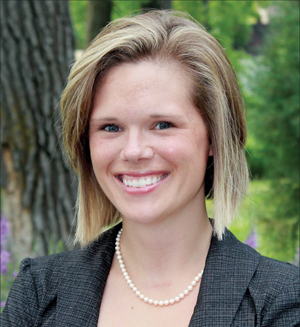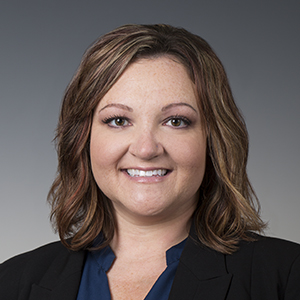Brushing Up on Dental Care in North Dakota
The Center for Rural Health makes recommendations based on a study of ways to improve North Dakotans' oral health.
By Nikki Massmann on
A trip to the dentist is a childhood rite of passage. Children go in for a routine cleaning and hopefully become members of the "No Cavity Club." For adults, it's a common experience that we like to commiserate about. No one really enjoys it, yet we all know it's necessary. But for many populations, especially those in rural areas, routine visits to the dentist can be few and far between.
In order to assess oral health in North Dakota, the state's Legislative Health Services Interim Committee was charged with conducting a study. The Pew Charitable Trusts approached and subsequently funded the Center for Rural Health (CRH) to conduct a neutral study and to provide recommendations based on the findings. Pew is an organization working to improve oral health access across the United States. They chose to fund North Dakota's study because the state had been discussing access and workforce around oral health for some time. The Trust works to move the discussion along and assist a state in making recommendations, whatever they may be, to the legislature.
"Everyone involved worked to ensure recommendations to the Legislature come from within the state and those that have firsthand knowledge of the needs," said Shawnda Schroeder, PhD, research specialist at the CRH. "We chose our research methods and stakeholders based on what we know about North Dakota."
Beginning in May of 2014, Schroeder began assembling two groups of individuals to provide input and to help assess oral health data for North Dakota. The Stakeholder Working Group was made up of people that worked with populations with oral health needs, such as teachers, nonprofit health centers, long-term care organizations, and emergency room personnel. This group met frequently throughout the summer of 2014 to identify oral health needs in North Dakota and to hear state and national presenters address possible models to improve the oral health status of North Dakotans.
Are people getting the care they need when they need it?
"Oral health status means the level at which North Dakotans are getting the oral health they need," said Schroeder. "Are people getting the care they need when they need it? The assessment process was developed around answering that question."
In addition to the Stakeholder Working Group, a separate Input Group also worked on the assessment. The Input Group comprised organizations that have experience engaging in oral health work, such as provider organizations. This group was asked to share their knowledge regarding oral health access, workforce, and models, as well as review and provide recommendations for the full assessment report.
These two groups worked together to assess the existing oral health workforce and service capacity, evaluate the unmet need for oral healthcare, perform analyses on oral health workforce data, and develop a report of outcomes, findings, and recommendations. Among those findings were the following:
- American Indian third-graders reported higher rates of tooth decay, untreated decay, rampant decay, and need for treatment than their white and other minority peers.
- More third-graders presented with history of decay, untreated, treated, and rampant decay among schools where 50 percent or more of students qualified for free or reduced lunch.
- Medicaid reimbursement rates increased in 2011, 2012, and 2013; yet the percentage of Medicaid enrolled children who had had a dental visit in the last year declined over that same period.
- In 2014, 12 counties had no dentist, nine had one, nine counties had two dentists, and five counties had not reported.
- In 2013, 67 percent of all the licensed North Dakota dentists worked in the four largest counties: Burleigh, Cass, Grand Forks, and Ward
The top needs that were identified in the state were related to prevention, care for the under- or uninsured and Medicaid populations, and workforce and access issues for special populations. Oral health disparities were prevalent among children, American Indians, those with low-incomes, those with disabilities, homeless, aging, rural residents, and those covered by Medicaid.

"Oral health is an important part of primary care," said Schroeder. "It has taken awhile to come to the forefront, and has long been seen as such a separate piece of healthcare. But it really is a part of overall health. If patients aren't getting in to see a dentist for preventive care, these patients may end up in the emergency department with oral health problems. Left untreated, they can lead to other health issues, and infection can spread to other parts of the body. Improved access to dental care could lead to better outcomes in the oral health status of these populations."
As a result of the assessment process, work will continue to improve access to oral healthcare in North Dakota. Partnerships have been created among entities in the state that are working on oral health. They now have a platform with which to work together and be aware of each other's successes. The goal of everyone involved in oral health is to get it to be viewed as just as important as any other part of healthcare.
Oral health is an important part of primary care....It really is a part of overall health.
"We now have a single location and a full list of all the organizations in the state working to improve oral health status in this assessment report," said Schroeder. "Work will continue to develop solutions to these health disparities and improve access across all populations in North Dakota. The common goal of everyone involved is that all those needing oral healthcare will receive it when they need it. A trip to the dentist for routine care should be a common experience that's accessible to everyone."
View the full oral health assessment report or the executive summary.
This article originally appeared in the Spring 2015 issue of North Dakota Medicine.


 is the Director of Communications at the Energy and Environmental Research Center (EERC). Prior to her position at the EERC, she served as Communication Coordinator at the Center for Rural Health at the University of North Dakota's School of Medicine & Health Sciences.
is the Director of Communications at the Energy and Environmental Research Center (EERC). Prior to her position at the EERC, she served as Communication Coordinator at the Center for Rural Health at the University of North Dakota's School of Medicine & Health Sciences.



